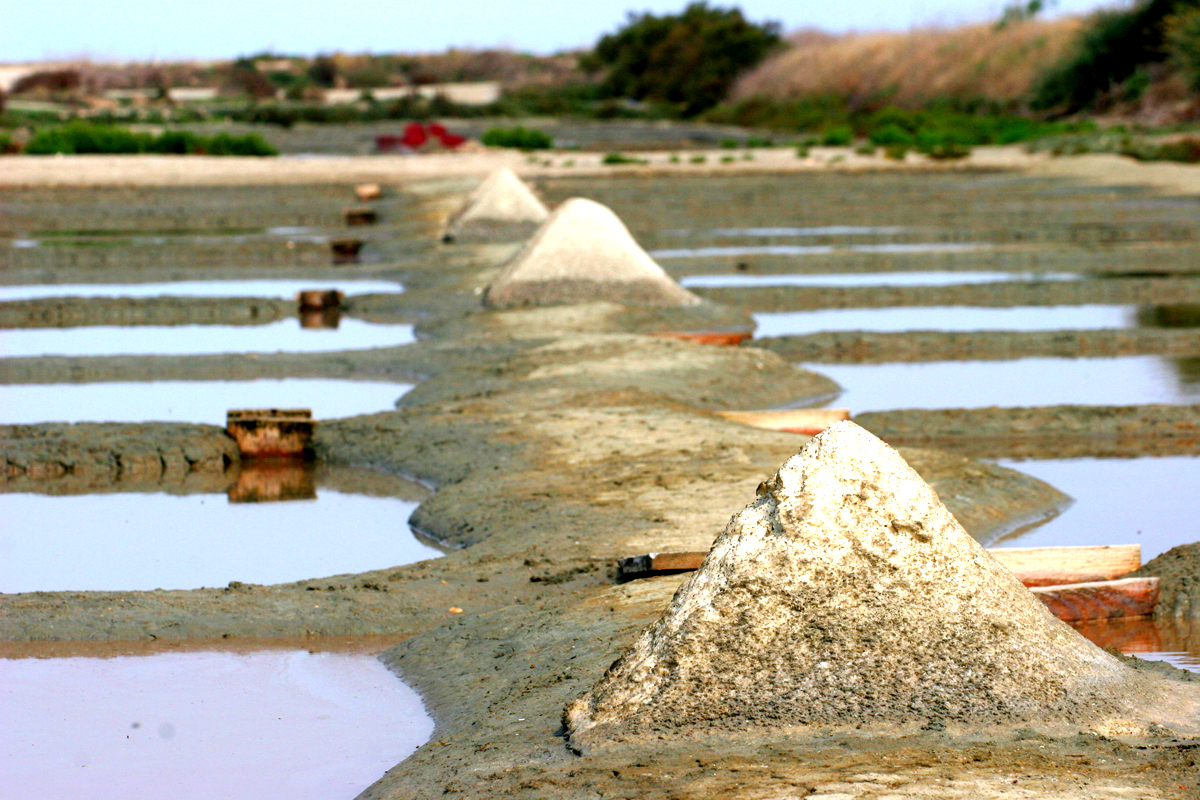There is not much to see at the salt museum, housed in an old farmhouse on the edge of Loix. Actually, it looks more like a small classroom where students have set up their science exhibits. A few old photos, rusty tools, and modest displays showing the process for farming salt. All in all it takes no more than 10 minutes to go through the whole thing.
But there is a salt pond behind the museum where I sat on the bank, watching a young woman named Almondine pull a wooden rake through the shallow water, bringing the gray salt from the floor of the pond to the berm where she carefully piled it into two-foot-high pyramids to dry.
Almondine is from Paris and has a degree in psychology so I asked her why she did this work on this little island. “I like being out here in the marshes,” she said. “It is very beautiful and quiet.”
And it was. Just the cries of gulls overhead and the soft sound of the wind rustling the dead stalks of wild mustard along the banks. Because the salt ponds are all in protected habitats, there is a lot of wildlife out here if you take the time to notice. More than 300 species of birds in fact, like the egret standing stoically just yards away from where Almondine worked.
We walked to the lowest pond where a thin crust of very fine salt had formed on the surface. This was the fleur de sel—flower of salt—which you can only get when the weather is hot and windy and the salt doesn’t sink but floats on top of the pond, giving it a naturally white color and a delicate taste. So delicate you can, as I did, taste it straight from the marsh.
“What does it taste like?” Almondine asked me.
“Like life,” I said.
She smiled. ”Oui, comme la vie. Très bon.”


Recent Comments